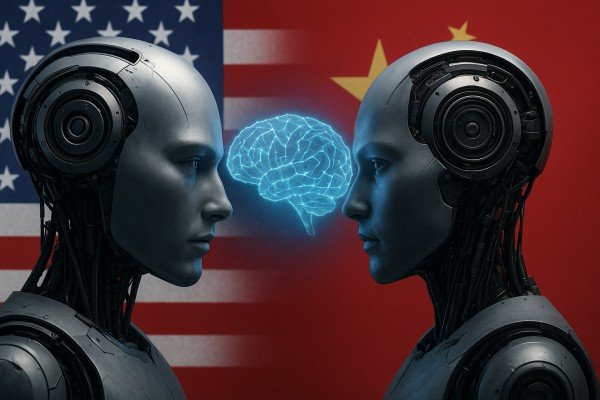In the 21st century, the world isn’t divided by military lines or nuclear arsenals it’s split by algorithms, data, and artificial intelligence. The new race for global supremacy isn’t happening on battlefields but in research labs and tech hubs. The U.S. vs China AI dominance struggle is shaping not just economies, but the very framework of the digital age. Both nations are fighting for control over the technologies that will define the future of humanity.
The Rise of the AI Battlefield
Artificial Intelligence has become the backbone of economic power and national security. From defense systems and financial markets to healthcare and infrastructure, AI defines who controls the next phase of global innovation. The U.S. vs China AI dominance battle intensified after both nations realized its strategic potential in influencing the world order.
While the U.S. pioneered AI research through Silicon Valley giants like Google, Open AI, and NVIDIA, China quickly closed the gap. The Chinese government’s “Next Generation Artificial Intelligence Development Plan” aims to make the country the world leader in AI by 2030. Backed by state funding and an unmatched data advantage from its vast population, China is aggressively pursuing advancements in machine learning, facial recognition, and quantum computing.
Data Is the New Oil
In this digital arms race, data has become the new global currency. The country that controls the most data can train the most powerful AI models. China’s centralized governance structure gives it unparalleled access to data from millions of citizens, creating a massive edge in AI development. On the other hand, the U.S. faces challenges due to strict data privacy laws and ethical considerations surrounding AI use.
Yet, innovation remains America’s strength. U.S. tech firms like Microsoft and Amazon Web Services (AWS) continue to lead global cloud infrastructure, powering AI research worldwide. This balance China’s control versus U.S. creativity defines the heart of the U.S. vs China AI dominance narrative, extending the rivalry beyond technology into politics, economics, and ideology.
Economic Impacts and Global Ripple Effect
AI is reshaping global trade and security. While the U.S. emphasizes private-sector innovation, China integrates AI into its government strategy and defense. This division creates two competing ecosystems where other nations must choose sides. The semiconductor industry, for example, has become a flashpoint in the U.S. vs China AI dominance conflict. With export bans and sanctions, the U.S. is trying to slow China’s access to high-end chips, while China invests heavily in domestic alternatives.
Countries like India and South Korea now play crucial balancing roles, collaborating with both powers while advancing their own AI agendas. This dynamic is redefining how technology shapes international partnerships and global competition.
This tug-of-war impacts global supply chains, investment patterns, and even startup ecosystems. Nations like India and South Korea find themselves in strategic positions, benefiting from partnerships with both powers while pushing for their own AI initiatives. Interestingly, India’s growing startup ecosystem reflects how emerging markets are adapting to these global shifts, something we explored in our earlier article.
Beyond Economics: The Ethical and Political Divide
The U.S. vs China AI dominance race isn’t only about innovation it’s about values. The U.S. promotes transparency, human rights, and responsible AI, while China uses AI for governance and surveillance.
Western nations, led by the U.S., advocate for a “Responsible AI Framework”, ensuring AI remains accountable and fair. In contrast, China’s approach prioritizes efficiency and control, raising concerns about privacy and digital authoritarianism. The future of AI regulation may well determine how much freedom societies retain in the digital era.
The Human Side of the AI War
While the headlines focus on innovation and rivalry, it’s easy to forget the human impact. Millions of workers face uncertainty as automation grows. The rise of generative AI tools has already disrupted industries like journalism, design, and entertainment. Both the U.S. and China are grappling with how to balance progress with job preservation.
Moreover, the AI boom is influencing global culture. From social media algorithms shaping political opinions to AI-driven music and art redefining creativity, technology is now a key player in human expression and communication. Public figures and influencers often become part of this narrative similar to how we explored personalities like Christian Rock and Gavin Newsom in earlier features that examined digital influence and leadership in modern times.
What Lies Ahead
The U.S. vs China AI dominance battle is far from over. The coming years will determine whether cooperation or confrontation defines the AI era. Many experts are calling for international AI treaties, similar to past nuclear agreements, to prevent misuse and promote ethical innovation.
Ultimately, the outcome of the U.S. vs China AI dominance struggle will define the future of technology and society. Whether it’s America’s open innovation or China’s centralized ambition, one truth remains whoever leads in AI will shape how humanity lives, works, and thinks in the digital age.






